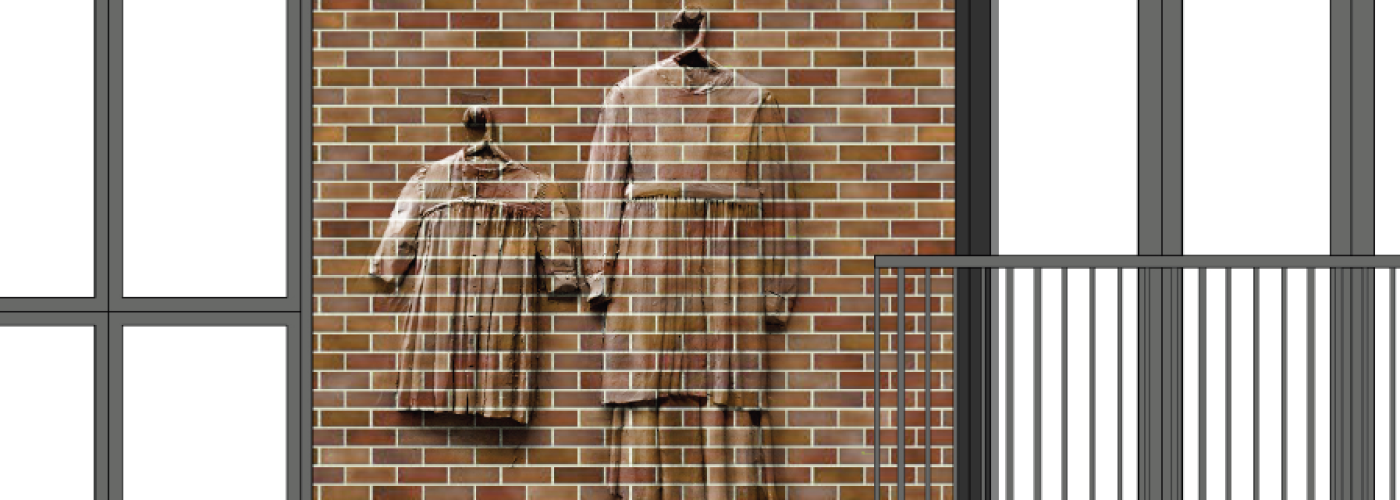Installation art in two new London developments inspired by the local community
Art and architecture have always been intrinsically linked. Art has often reflected the changing landscape of cities and urban spaces, with classical and modern pieces of architecture regularly deemed ‘works of art’ in their own right. With ever increasing demands for housing in the capital, the competition to get noticed and offer residents different, engaging and attractive homes is fierce. Standing out from the crowd are the developments that offer an environment that not only provides the comforts of efficient modern design but reflects cultural and historical links to the immediate area.
Housing developer Peabody has recently launched two central London developments that have incorporated high quality contemporary living space with exciting and engaging artwork, unique to each development. Both, More West in W10 and St John’s Way in SW11 are perfect examples of a successful balance between aesthetics, culture, history and practicality. These two schemes have both utilised the local history and heritage of their respective areas in creating art installations that will be on permanent display to residents, locals and passers-by.
More West is located in the heart of one of London’s best arts and culture scenes near Notting Hill and Portobello Road. Contemporary British artist Nathan Coley was chosen from a shortlist of accomplished artists by Peabody and architects Haworth Tompkins to design and install a piece of public art central to the development’s overall look and feel. Originally drawn to the project because of ‘Peabody’s strong history’, Turner Prize nominee Coley formed his final idea, a seven metre high abstract apple tree sculpture gilded with 24 carat gold leaf, after comprehensive research into the local area. The sculpture, situated on the development rooftop, reflects the intriguing history of a small community that lived on the site in the 1970’s. Known as the Free Independent Republic of Frestonia, each member of the local group of residents changed their surname to ‘Bramley’ taking inspiration from a local street name Bramley Road. Coley’s research and subsequent unearthing of the Frestonian’s history inspired his ‘Bramley apple’ sculpture that was “….a light bulb moment,” Coley comments.
“It was important to choose the artist early on in the design process,” states Andrew Rowson architect at Haworth Tompkins. “It’s always fascinating to see what an artist will create when collaborating on a project and it was Nathan’s approach to the site and to working with Peabody, Haworth Tompkins and the residents that was really exciting. The most interesting aspect however, was how three separate elements were brought together to tell a story about a very interesting, but mainly forgotten history. There was of course the main sculpture displayed on the development but also individual sculptures that were given to residents and the publication of an accompanying book. Brought together they appealed to an audience, both at a city and national level, but also they sought to create a bond with the past and a sense of community for the new residents.”
Visible from Latimer Road Underground station, Coley’s apple tree plays an important new part in the local landscape, its presence echoing the site’s history, brings a sense of pride to the development and a permanent art fixture in the area.
Equally inspiring but with a very different approach, St John’s Way situated near Clapham Junction, features installation artwork in its structural brickwork, created by artist Rodney Harris. “The conceptual basis for the sculptural intervention is to commemorate the philanthropy of George Peabody and celebrate the people, past and present living in the area,” comments Harris. He further adds, “I have created a series of four brick relief sculptures, carved in identical material to the surrounding brickwork resembling the presence of memories and histories.”
Harris’ integrated artworks include; services uniforms, pinafores, tools and a Butler’s sink which will be installed with further sculptures across the remaining phases of the development. Each location for the artworks has been chosen to, “…provide varying natural light… how it changes over a day will vary the clarity of each artwork,” states Harris. Iain Cochran of architects Hawkins Brown further adds, “Involving an artist on architectural schemes can bring many benefits to a project including a strong, unique identity and an opportunity for the building users to inhabit an environment in a subtle and personal way.” Each sculpture has been placed at a specific location around the development designed to increase legibility, identity and serve as navigational markers ‘creating a sculptural trail’.
In addition to tangible artwork, More West had its very own Artist In Residence supported by amongst others Peabody, the V&A Museum, RIBA, and Haworth Tompkins. Constantine Gras was selected as the official Artist In Residence in part because of his existing community work having previously worked on the site at a former day care centre. For the duration of his seven month residency from 2014 to 2015, Constantine involved a range of media, “…exploring urban and social issues often working collaboratively with other artists and communities,” he states. Constantine’s brief, ‘to create art in response to the More West development and to connect this with both local residents and the museum’s architectural galleries’, inspired him to run 10 community events ‘based around architecture, housing and regeneration’. Run from either his studio looking over the development or the V&A, Gras’ projects included the screening of a film made in the local area in 1969 called Leo the Last, drawing events and displays of local historical maps and images. “I had extensive knowledge of the rich, complex social history of the area,” says Gras. “It was an extremely busy but rewarding time for me and it was a pleasure to be the Artist In Residence,” he adds. Over 1,700 people attended Gras’ V&A end of residency display ‘Vision of Home’.
Both artistic enterprises at More West and St John’s Way have gone beyond visuals. They have taken to heart the social, cultural and historical influences of both areas and created interesting, creative and stand-out installations for not only residents to enjoy but the wider community and all passers-by. Sarah Butler, Director of Sales and Marketing at Peabody states, “We are really excited that these two developments have such interesting and inspired artworks as part of their final construction. Residents will not only be able to enjoy the benefits of fantastic living and communal space but can take pride in each developments artistic contribution.”
Prices at More West start from £750,000 for a two bed apartment get in touch by telephone on, 020 7758 8431 or visit www.morewest.co.uk. Prices at St John’s Way start from £485,000 for a one bed apartment. Buyers can register their interest by calling 020 7346 5804 or visiting www.stjohnswaysw11.co.uk.





